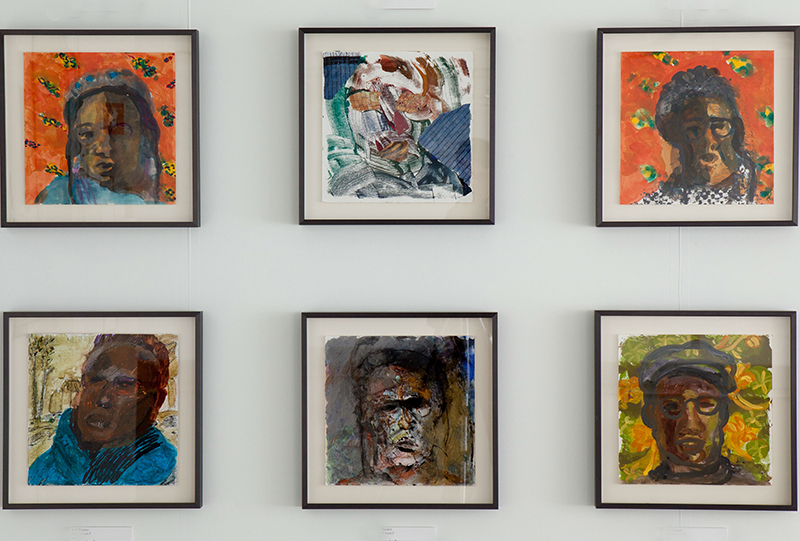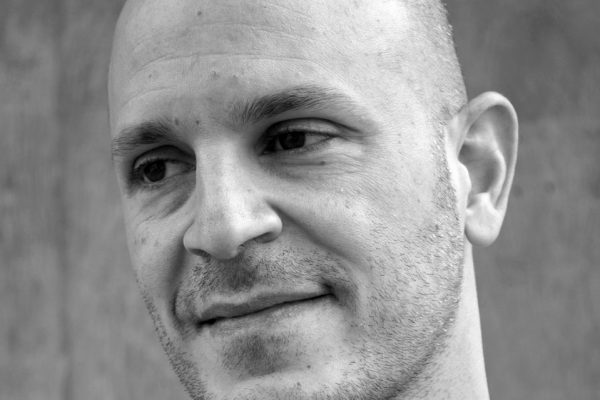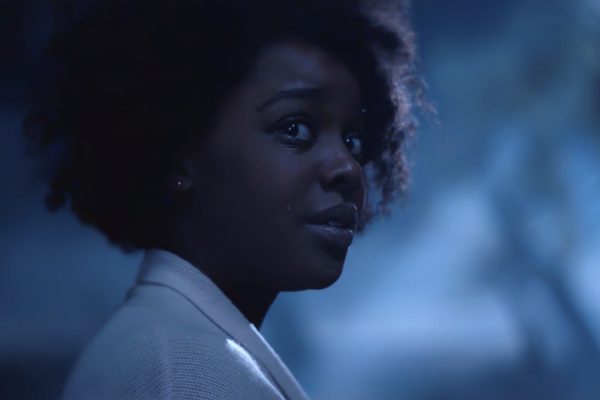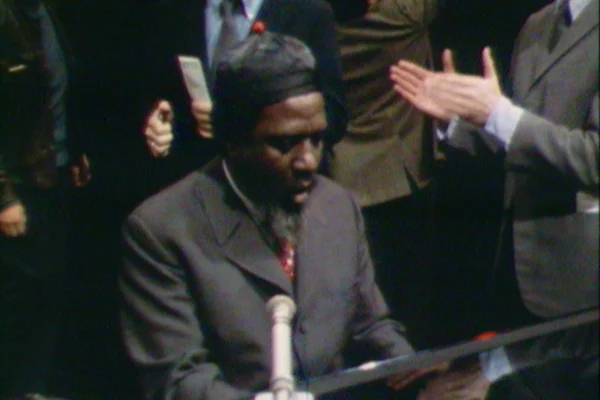Nell Irvin Painter is an esteemed scholar of African American history and race, whose books include the New York Times bestseller The History of White People (2010). After retiring from Princeton University where she taught for several decades—and where her advisees included a generation of pathbreaking Americanists, including Walter Johnson, Stephen Kantrowitz, Crystal Feimster, and Chad Williams—Painter pursued a second bachelor’s degree in studio art at Rutgers University and then earned an MFA from Rhode Island School of Design. Her memoir Old in Art School (2018) reflects on her experience as a sexagenarian art student after decades spent as a tenured, award-winning grand dame of the academy. The book was also the point of departure for two concurrent exhibitions of her artwork, Freedom from Truth: Self-Portraits of Nell Painter and Odalisque Atlas: White History as Told Through Art (October 7–November 7, 2019), which I mounted at Harvard in the arts exhibition space of the university’s newly remodeled student center.
‘In art, I can delve into what I can’t know as an historian. That’s a freedom that artist Nell Painter can exploit, but historian Nell Irvin Painter must back away from.’
Self-portraiture is central to Painter’s creative practice. She uses the act of creative self-reflection to explore her subjectivity as a black woman negotiating various aesthetic traditions. Painter describes the black body as a minefield, in which “every single line and volume carries social meaning.” In Freedom from Truth, some of the pieces are traditional self-portraits—life-like representations of Painter created by Painter herself—while others expand on traditional understandings of self-portraiture through digital manipulations, collage, and text.
Odalisque Atlas displayed all eight pieces from Painter’s Black Sea Composite series together for the first time. In this series, Painter reimagines the political boundaries of slavery and unpacks the origins of the word “slave,” whose etymology in most European languages traces to the enslavement of Slavs during the Middle Ages. Slavic peoples hail from many parts of Eastern Europe, including the Caucasus. But owing to the work of nineteenth-century scientist Johann Friedrich Blumenbach, who believed racial hierarchies were a feature of the natural world, “Caucasian” came to signify a person of European descent. In her Black Sea Composite series, Painter maps this complicated history of whiteness onto the geographies of Atlantic slavery.
The opening of the exhibitions featured a conversation between Painter and Harvard historian (and Painter’s former student) Walter Johnson. The two discussed the generative tension between the craft of the historian and the creative license of the artist. How does a scholar mix unfettered creativity with the rigor of the historian? How can a seasoned scholar reinvent herself after age sixty-five? How can a historian-artist reimagine the past and fashion new futures with freedom from truth?
—Jonathan Michael Square
Walter Johnson: When I saw the title of the exhibition of your self-portraits, Freedom from Truth, I couldn’t help but think about your biography of Sojourner Truth, Sojourner Truth: A Life, A Symbol (1996). In it, you write about how Truth was in a very real sense self-fashioned, a reinvention of the woman originally christened Isabella Van Wagenen. Truth took the quite remarkable step at the time of copyrighting her own image, and selling portraits of herself to fund her activism, each of which bore the inscription, “I sell the shadow to support the substance.” Which is all a long way of asking about how your self-portraits as Nell Painter, artist, relate to Nell Irvin Painter, Edwards Professor of American Woman at Princeton and award-winning author.
‘As I learned, my painting improved. My teachers could see that and were confounded. I think they believed in the primacy of talent, something you either have or don’t. I probably still lack artistic talent, but that doesn’t matter. Talented or not, I make my art.’
Nell Painter: Jonathan Square, my Harvard curator, gave the self-portrait show its title, Freedom from Truth, after I rejected a suggestion that played on the title of my memoir. With Freedom from Truth, Jonathan referenced both my biography of Truth and the contrast between how I write history—respectful of the archives—and how I make art, disrespectfully. Or not disrespectfully, but self-indulgently. In art, I can delve into what I can’t know as an historian, imagining images that historiography can’t document. That’s a freedom that artist Nell Painter can exploit, but historian Nell Irvin Painter must back away from.
You note Truth’s selling of the shadow to support the substance, which is a long way from my art making, and not just in terms of chronology or medium. Truth made her way from slavery to legal freedom, but her finances were never secure. When she sold her cartes de visites, she really needed the money. I don’t need the money, which is bad manners for me to mention (especially for a black person, especially for a black woman), but that not-need made it possible for me to attend Mason Gross School of the Arts and the Rhode Island School of Design in the first place. Art school is atrociously expensive, and professional artists are rarely paid handsomely. I appreciate deeply the financial assurance that made it possible for me to earn two degrees in painting. For Truth and her daughters (who earned their livings in domestic service), education, even primary education, represented a luxury far beyond their reach. With advanced formal education off limits, Truth and her hardworking daughters were far more typical of black women than I am, even in our own time.
Education as a theme runs through the experiences of my two coexisting personae. Nell Irvin Painter, certified by the American Historical Association as a scholar of distinction, earned a Ph.D. in history from Harvard, an educational marker that states its own terms. Nell Irvin Painter, PhD, is very well educated. And both Nell Irvin Painter and Nell Painter continue to enjoy the process of self-education known as reading. Nell Irvin Painter no longer writes scholarly books, but her reading still inspires the eyes and hands of Nell Painter, artist, as in my current project. Don’t ask me what it is or will become, because I don’t know. I’ve collaged four walls of my MacDowell studio with drawings and photographs and I’ve made a little 7” x 4 ½” artist’s book entitled Ancient Hair Book. This project, whatever it is, incorporates my drawings and bits of text with screen shots of classics scholars contending with white nationalists over whether the ancients, as people or as art, were white. Both the historian and the artist in me make this work, this artifact, whatever it is.
So far I’ve been talking as though education equals studying history, but its more than that. In art school my dedication to education—to learning—paid off in a way that astonished some of my teachers. As I learned more about art making, which I see as a process of education, my painting improved. My teachers could see that and commented on my improvement as though it were confounding. Maybe they thought I was too old to learn, but I don’t think that was it. I think they believed in the primacy of talent, something you’re born with, something you either have or don’t. In this way of thinking, my early bad paintings demonstrated my lack of talent. My later, better paintings could not be accounted for. I thought that education had improved my painting, through time spent and skills increased. I probably still lack artistic talent, but that doesn’t matter. Talented or not, I make my art. Therein lies freedom.
To answer your question about the relationship of Nell Irvin Painter to Nell Painter as reflected in my self-portraits, I’d say Nell Painter is in the self-portraits, which do not convey a coherent image of the archive, which in this case consists of my personal appearance. Personal appearance? How contingent! My appearance changes according to the lighting (gentle or cruel), to the quality of my previous night’s sleep, to whether or not I’ve applied makeup. My self-portraits in their variety reflect those archival contingencies and then add on more in the process of art making. You could say that Freedom from Truth captures both the contingency of personal appearance, my art’s archive, and the variety of images the imagination can project via eye, hand, and digital media.
WJ: Old in Art School is an enormously generous book—fearlessly self-revealing, generous and brave. How did art and art school help you find that voice, at once so perceptive and so vulnerable? You say in the book that you cannot paint a nude self-portrait, but it is almost as if you have in the book.
‘Saying the word old can be hard. When people would ask about my project and I’d respond with the word old, unfailingly I’d be reassured, “You’re not old, you’re older.” No no no. We know old, even though the word pleads not to be uttered.’
NP: I’m glad you liked Old in Art School, and thought it generous. I wanted to be frank with my readers. Early on I decided to make the book personal: everything in it is as seen through my eyes and experienced through my body. My old black woman’s body—with thanks to my mother, Dona L. Irvin, for using the forbidden word old in the title of her own book, I Hope I Look That Good When I’m That Old (2002). From the beginning I said I wanted to do for old what James Brown did for black. When I’m speaking before a particularly warm, responsive audience, I’ll encourage them to say the phrases together:
Say it loud, I’m black and I’m proud!
Say it loud, I’m old and I’m proud!
My audiences—mostly white and mostly my generation—glow in the freedom to proclaim themselves proudly black. Proudly old doesn’t come quite so easily.
Saying the word old can be hard. When people would ask about my project and I’d respond with the word old, unfailingly I’d be reassured, “You’re not old, you’re older.” No no no. When you’re in art school, old is past thirty. When you’re an American woman, you’re old at forty. Every single woman I’ve ever talked to recognizes the phenomenon of becoming invisible at forty. We know old, even though the word pleads not to be uttered. I wanted not only to be honest about being old, but also to foreground it. Old is usually unsayable. We can approach it only through euphemism, older, which in its use of the comparative refers to our national obsession with youth. But old stands proudly by itself, not looking over its shoulder at youth.
Getting old isn’t only about burden. There’s the wisdom that comes with age, of knowing that crises don’t last forever, and of recognizing bullshit and calling it out by its name. It’s no accident that old people report being happier than young people. But even with the blessing of excellent personal health, there are the failures of memory and energy and bodily strength. Add to that the familial and material demands associated with caring for infirm parents, which for many people is not only heartbreaking but impoverishing. And the loneliness of being that unsayable, old, in a world of young people.
Unrelated to age, my readers have said they appreciate how the book acknowledges the feeling of being pathetic—especially for a black woman, to admit to pathetic weakness when black women are supposed always to be strong. Many readers, recognizing their own insecurities in mine, thank me for my candor! You can call it fearless self-revelation. I knew I was revealing myself as I never had as a historian, but I didn’t feel fearless. I felt honest. That honesty, that fearlessness, will have to stand in for my nude self-portrait.
WJ: As much as Old in Art School is about aging, it is also reflection on youth—on all the beautiful, brilliant, impetuous, oblivious art students who were your classmates. What did you learn from then, do you think, and what do you think they learned (or should have learned) from you?
NP: It’s on purpose that age and ageing form the spine of my memoir, for my being old was the main influence on my experiences in art school. Being black counted, of course, but young black people’s experiences weren’t my own. Being a black woman meant a lot, too, for I could never be one of the boys. Being old felt to me like the highest barrier between me and my fellow students and also from my teachers, who could have been my children.
In Old in Art School, I have written about my twentieth-century eyes that made it hard for me at first to see what artists today are making as art. My visual tastes had been shaped in the twentieth century by Charles White and Elizabeth Catlett and Ben Shahn. My twentieth-century eyes had to learn that Thomas Hirschhorn is a major artist making art the way art is made now—that his work is not just random piles of things. Understanding this required art education to bring my eyes into the twenty-first century. Eye lessons came from looking at art. Life lessons from my young peers came as I worked beside them. I don’t know if they learned anything from me—what could I know? But I learned a lot from them.
I learned to use the word fuck in all parts of speech. I learned that not everything that needs to be done needs to be done well. I learned to be self-centered and to regard what I didn’t understand as stupid, which, sometimes, it surely is. I learned to own my ambition and my specialness as an individual, though both took some time.
I learned to answer the question, “Why did you go to art school?” with, “Because I wanted to, and I could.” When I say that, women’s eyes open wide on hearing me utter what are, for women, unspeakable: “wanted to” and “could” without qualification or apology. Shocking that I was talking openly about ambition and having enough money to undertake so arduous and so expensive an adventure.
WJ: One of the things that people say to me about Nell Painter, the artist, is that “she seems so happy.” There is a contrast that runs through the book of the extraordinary visibility and celebration of your scholarly work—never enough, I’d argue, but more than most ever achieve—with the sort of tearing down and questing and rebuilding that you were doing in art school. I’d like to hear you talk a little about what sorts of peace you have found in art—even if only in the moments that you have lost yourself in the studio.
‘I learned to answer the question, “Why did you go to art school?” with, “Because I wanted to, and I could.” When I say that, women’s eyes open wide on hearing me utter what are, for women, unspeakable: “wanted to” and “could” without qualification or apology.’
NP: I do feel contented, but this is a contentment I associate also with age rather than simply with art. Surely there’s a feeling of timelessness that comes with making art that I don’t easily associate with writing history. Although on second thought I’m forgetting my days of research in my windowless office where I felt non-passage-of-time as I rooted around in other historians’ work. But it is true that when writing history, I feel a responsibility to historical truth that doesn’t allow my imagination free reign. In the studio, in contrast, I make fictions according to the wanderings of my visual imagination. I work in a printmakerly way, in that I’ll make multiples and work in series on paper. On paper rather than canvas, with graphite and ink rather than paint. One image will inspire another image leading to another image inspired by that image, and on and on. No end in sight. Just until the impetus runs out, hours or days or months later.
I would not say that my artist self is a truer self than my historian self. There’s still room in me for both. I’m grateful for my good fortune to be able to pursue two of my loves, one scholarly, one visual. Two selves, you might say. They are not at odds with one another like Du Bois’s double consciousnesses born of oppression. My two selves owe their coexistence to opportunity.
WJ: The Odalisque series seems very historical to me, and yet it twists things that historians usually keep apart—black and white, early modern and contemporary, Europe and America, etc.—in an unanticipated way. Could you talk about where it came from, and what it allowed you to see and say that history writing could not?
NP: Odalisque Atlas comes out of The History of White People, specifically the chapters “White Slavery,” “White Slavery as Beauty Ideal,” “The White Beauty Ideal as Science,” and “Johann Friedrich Blumenbach Names White People ‘Caucasian’.” During my research for that book, I learned about the Black Sea slave trade, older than Herodotus, from the Caucasus into the wealthy eastern Mediterranean. There were remarkable similarities relating to servitude, gender, and sexual vulnerability between it and the Atlantic slave trade. But The History of White People is about white people, so my extended intercontinental investigation had to wait.
The Black Sea Composite Maps shown at Harvard as part of Odalisque Atlas is made up of eight maps depicting an imaginary terrain of conjoined places where odalisques, sexually vulnerable slave girls, come from. Around my “Black Sea” are the slave lands of the Caucasus, Ukraine, Haiti, Thailand, Texas, New Orleans, Alabama, the Dominican Republic, Turkey, Congo, Benin. Puerto Rico is in the middle of the “Black Sea.” In all those places, young girls and also boys became the sexual playthings of their owners. Skin color didn’t and doesn’t protect them.
I knew from research I had done ages ago for my essay “Soul Murder and Slavery” (2002) that the costs of child abuse are psychological as well as physical, and they don’t stay within one race. Years ago I resented that southern conservatives had hijacked the psycho-dynamics of servitude and ownership, fashioning them into proslavery hymns. Such a use of human relations rankled. I also chafed against myopic history writing that oversimplified multiracial society. But in 2012 I no longer wanted to write historical essays. I wanted to make images that might—or might not—set viewers to thinking. If they just wanted to look at colored compositions, that was okay with me. Still is. What you call “regular old history writing” is someone else’s (your) job now. No reason for me to do the same thing forever.








